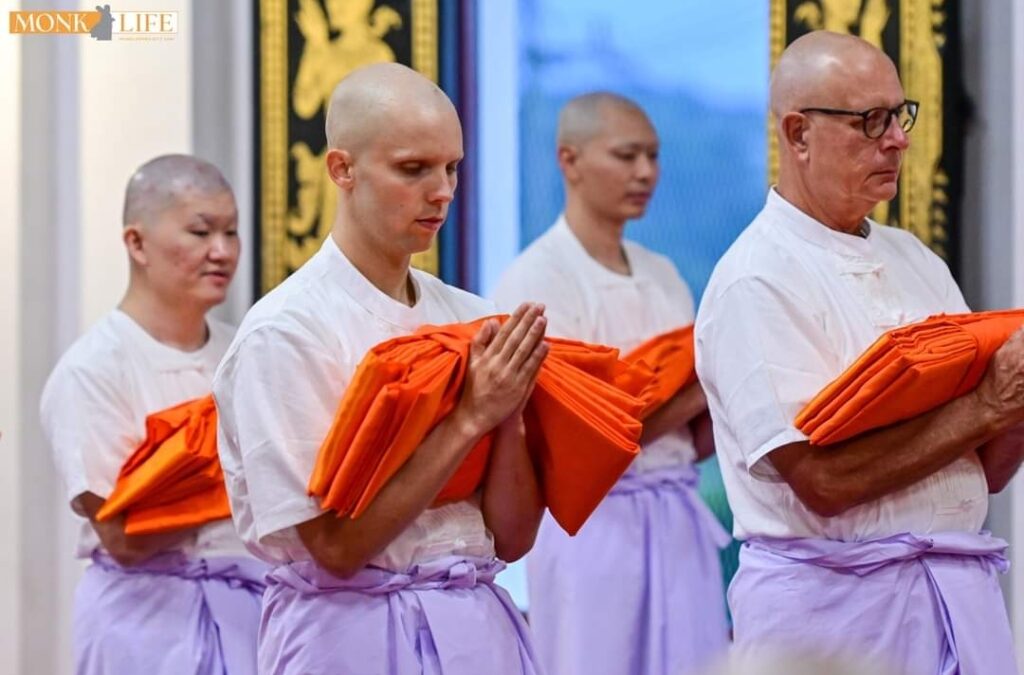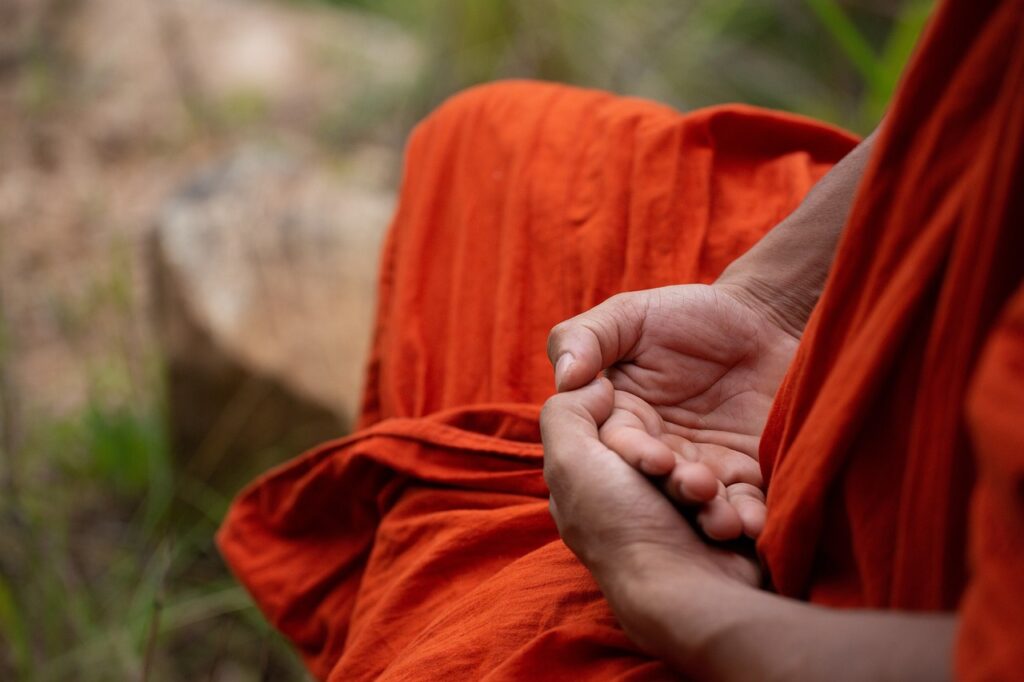How to meditate?
A Practical Guide
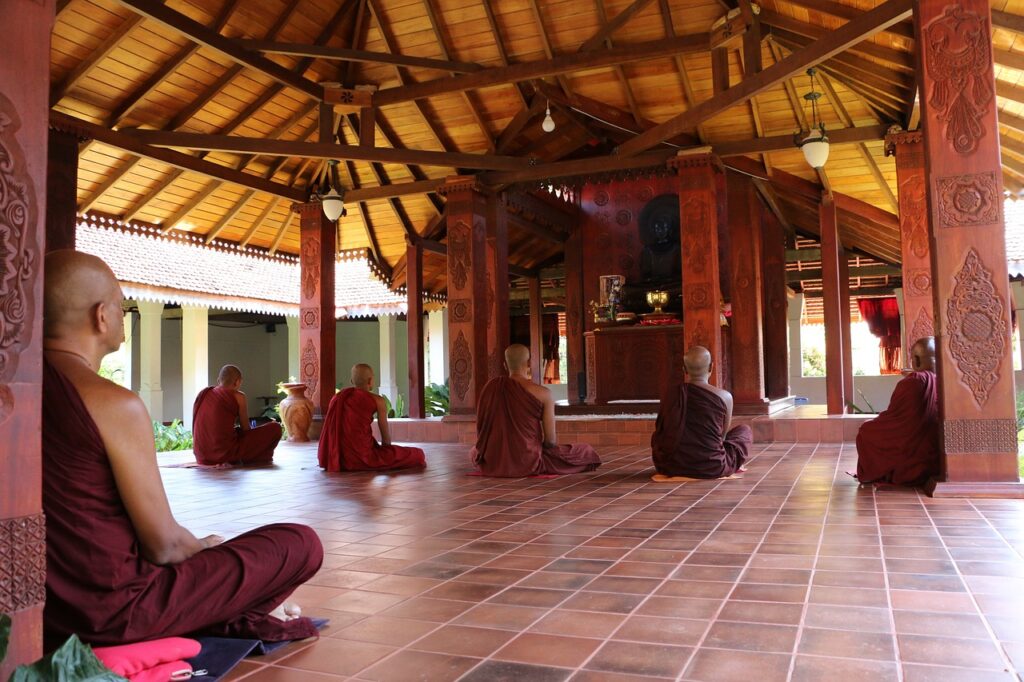
How to meditate
“Meditation is like a gym in which you develop the powerful mental muscles of calm and insight.”
Ajahn Brahm
1. Intro
Meditation is not a practice that is reserved for monks in caves or Yogic sages in ashrams; it’s a practice accessible to everyone, regardless of age, background, or experience. You also don’t need any special skill or salary to be able to practice. You can do it right here, right now. The beautiful thing is: anyone can practice meditation and reap the fruits of this ancient practice.
However, for a lot of people that are trying out meditation it can be a bit of a struggle. Beginning meditators often worry if they are doing it correctly or not. They take up bad posture and often feel like they are just sitting out the time instead of meditating. The practice seems quite difficult to grasp because it appears to be so close to the original state of awareness. Isn’t our attention already here and now?.
In this article I will walk you through the essentials of this beautiful practice. First addressing some practical elements, to properly prepare for a practice session, and then debunking some common misconceptions. After that, I’ll delve into the practice itself.
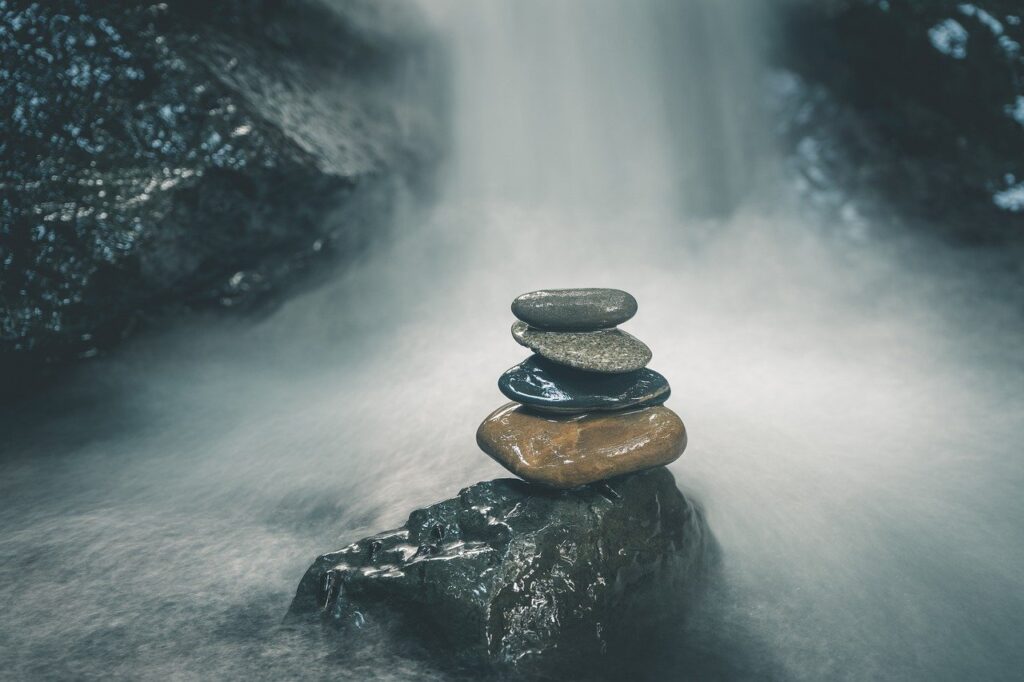
2. Preparing for Meditation
2.1 Setting the stage
First of all, creating the right environment is crucial for a fruitful meditation session. We want to make the environment as conducive as possible for meditation. Here are some pointers on how to set the stage:
- Choose a quiet space: Find a quiet, comfortable space where you won’t be disturbed. It could be a specific corner of your room, a serene outdoor spot, or any place where you feel at ease.
- Eliminate distractions: Turn off notifications on your devices. You can put your phone in airplane mode like I always do. Choose a time when you’re least likely to be interrupted.
- Comfortable seating: Sit in a comfortable position. You can sit on a cushion, a chair, or cross-legged on the floor. The key is to maintain an upright posture while remaining relaxed. I will elaborate on meditation posture in 2.2.
- Lighting: Soft, ambient lighting can help create a calming atmosphere. Natural light or dimmed indoor lighting works well.
- Routinize: It is really helpful to routinize your meditation practice. The same place, and same time every day helps you stick to the practice and not just do it when you feel like it. It also helps your brain to get into the meditative state if you are consistent with your timing and location. Just like with sleep, the brain knows when to perform a certain function. This is not to say you can ONLY meditate then and there, by all means, meditate anywhere and anytime, but a routine helps to ground your practice and helps you stick to it.
2.1.1 Notes on Setting the stage
It is important to note this is about the formal practice of meditation, where you sit down and carve out some period of time specifically for meditation alone. There is also informal meditation which can be practiced anywhere, anytime. For instance, walking in a forest or sitting on a train. I will go a bit more into detail on informal meditation (mindfulness) in another article.
Most of the above-mentioned meditation preparations can be experimented with. There are of course sound meditations where the space should purposely not be quiet. The lighting also doesn’t matter all that much but it may help. The most important preparation mentioned above is the seating, because your posture can greatly influence your meditation practice. So let’s dive a bit deeper into it.

2.2 Posture
The meditative posture doesn’t have to be all that intricate. The sole requirement is to sit with your spine straight all the way up to the top of your head, while keeping the muscles relaxed. What you ideally want is to be comfortable and steady at the same time. When you start meditation I’d recommend to sit on the edge of a chair with a straight spine and your feet planted firmly on the ground. If you do want to acquire a more traditional ‘advanced’ meditation posture, this video will help you with that. This more ‘advanced’ posture might take a little practice before becoming comfortable. Westerners are not used to sitting on the floor, most of us have tight hip flexors and an underdeveloped core to be able to pull it off. If it’s more comfortable, you can stay on the chair. It won’t hinder your meditation.
2.2.1 Back problems?
A very important note with posture, not just in meditation but in daily life, is that you don’t want to create an overexaggerated S-shaped spine. This S-shape is often advised, but the exaggerated curves in the lower back and neck actually cause a lot of back problems. I myself have had some bad back problems. Especially during my time as a monk, where I had to do a lot of long meditations sitting on the ground, my back started to hurt more and more. When I got back home I went to different physios and tried all sorts of exercises but nothing worked. Only after reading the book 8 Steps to a Pain-Free Back, which gives simple posture advise for daily life, have I been able to relieve my back pain.
Look at the image below, a man posing for a meditation picture, but he has horrible posture. His back is very rounded, his pelvis is tucked and his knees are almost in his chest. When you sit down it is important not to tuck the pelvis under like this, Meditation doesn’t have to cause you any problems if your posture is good. What this man is doing, will cause pain within minutes.
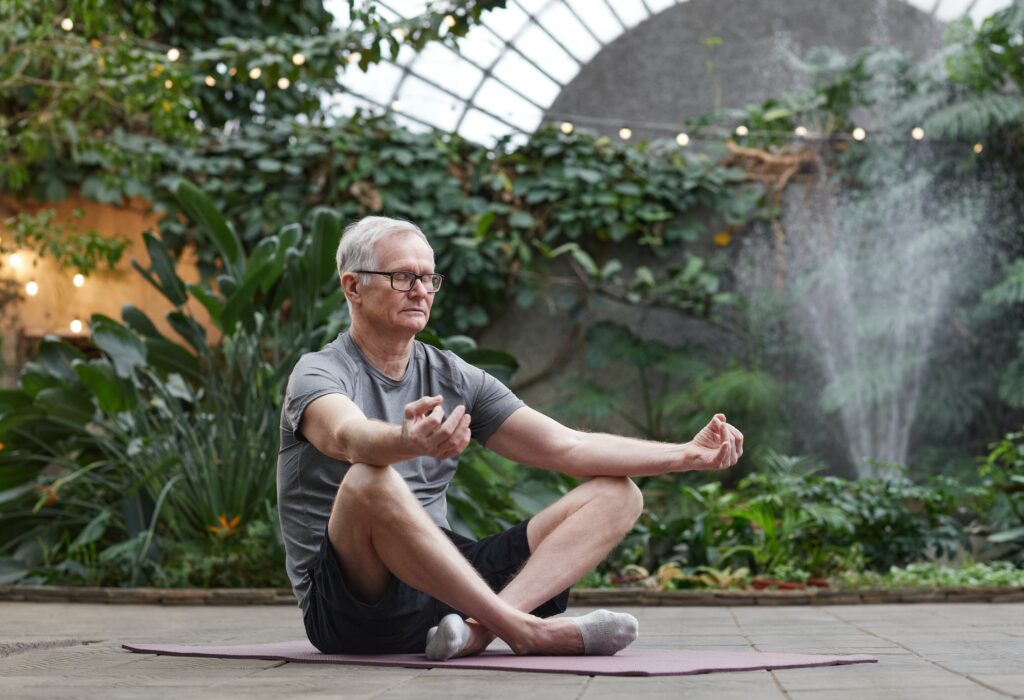
The image below shows how you are supposed to sit. Sit with a slightly anteverted pelvis, which means to not sit on your tailbone, which causes slouching and a rounded back, but sitting properly on your butt muscles. What may help is to imagine if you actually have a tail, for a correct posture we want the tail to be flapping free behind us, not tucked under the bum. Try to sit on the very edge of a cushion, or the edge of your chair, this helps to create the preferred elongated spine. If you are struggling with back pain a lot I recommend to read the book 8 Steps to a Pain-Free Back. I am not affiliated to the sales of that book by the way, it just really helped my posture so I could meditate with less pain.
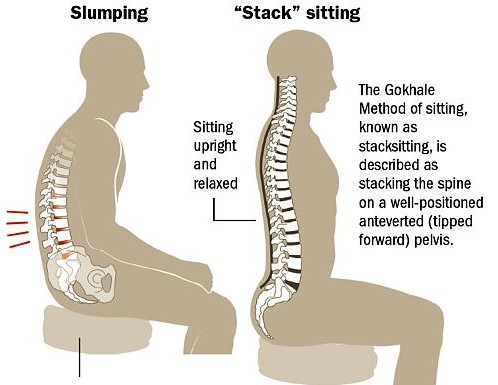
2.3 Misconceptions
A lot of people are hesitant to try meditation out for themselves. There are often a lot of preconceived ideas that simply aren’t true. So before delving into the how-to meditate part, let’s debunk a few common misconceptions about meditation.
Myth #1: Meditation is about willfully emptying your mind of all thoughts.
Trying to force your mind into stillness is not the practice of meditation. It is actually the natural function of the mind to continuously create thoughts and sensations. We’re not trying to work AGAINST the mind, it is about learning to work WITH the mind. Meditation is about creating a space of focused awareness and acceptance. Seeing the thoughts for what they are, transitory experiences, they lose their grip over you. The stillness that comes through meditation is not what we forcefully try to create, it is what happens naturally when we observe the mind and its workings.
Myth #2: Meditation is an esoteric practice reserved for spiritual adepts.
Meditation is actually a very practical tool that can enhance anyone’s mental and emotional well-being. The Buddha, for instance, was a human being, not a god. This is an essential part of his story exemplifying that anyone can follow in his footsteps, meditate, and realize Nirvana/enlightenment. Meditation really is a down-to-earth, hands-on approach of familiarizing with your own mind and its workings, it doesn’t have to be wishy-washy at all.
Myth #3: You need to invest a lot of time.
The purpose of meditation varies from person to person. For you meditation may be a tool to de-stress, someone else may practice it to become healthier overall, and another wants to find a deeper sense of meaning in his/her life. It may be true that if you want to become fully enlightened/realize Nirvana, you’ll probably have to practice quite extensively. But as most of us still have attachments in daily life, that is often not the goal. At least, not from the outset. I’ve found people getting mostly interested in meditation because of the scientific backing of its health benefits, mental and physical. All you really need to begin with is a few minutes of consistent practice, which can already yield meaningful benefits.

3. The practice itself: How to meditate?
3.1 Practice makes better
Meditation is like learning any new skill. Take juggling for instance. You have a vague sense of what you need to do but it doesn’t feel comfortable when you start out. To get to a certain level of comfort, you will need to practice it daily so you can develop familiarity. It is important not to overstretch yourself, and you have to allow yourself to ‘fail’, and start again (video). Now how do I learn this delicate skill you may wonder. Let’s learn how to meditate.
3.2 Okay, so how?...
Now the practice itself. Meditation is basically doing nothing. But people are too caught up in their minds and sensory inputs to be able to REALLY do nothing for even just a few minutes. The mind jumps from thought to thought, from focusing on this sound to that physical sensation, to thinking about dinner… Constantly busy, constantly distracted. So for beginners we don’t start of doing nothing, it will feel too alien, or even unbearable to most of us. We first soothe the so-called monkey mind by giving it a part-time job, like watching the breath for instance (watch video featured below).
As the mind slowly calms down and becomes more focused thanks to the meditation object, you can then smoothly transition into resting in awareness. Resting in awareness is basically doing nothing, just Being, fully present, without getting distracted. It is a type of deep rest that feels vibrant and alive, yet calming and soothing. Whenever you become aware of the mind objects in the form of thoughts or feelings pulling you in, you can re-focus on the support (breath/sound/etc.). There is no need to analyze why you got distracted, just gently guide your focus back to the support. That is essentially what you try to ‘do’ when meditating.
3.2.1 Simple, but not easy
Meditation is actually quite simple, in principle that is. In practice you’ll find it is not very easy. The monkey mind will constantly conjure up thoughts, feelings and emotions that will all seem very urgent: an itchy feeling on the nose, tension in the shoulders, or thinking about what your friend said two weeks ago. These are designed to grab your attention and if you allow them to, and identify with them, they will drag you along.
The mind is overstimulated. It is not used to quietude and will rebel against it. Whenever you try to introduce some peace into your life, the mind wants you to go back to the distracted state you were in before. It wants you to identify with the thinking mind (/monkey mind). If you view the mind as an entity in this way, it is sort of as if its survival depends on you being identified with the thoughts, feelings and emotions it constantly comes up with. If you disidentify from those, the monkey mind loses its power to draw you in. As you’ll see, that is exactly what meditation does: by disidentifying from fleeting thoughts and emotions that are randomly conjured up by the mind, eventually only what’s real within you remains.
3.3 Accept whatever arises
You don’t have to block, fight, or judge the thoughts (and emotions) that spring up. Don’t give them any power, just observe them as they spring up. Also don’t judge yourself for thinking them. Just compassionately notice the thought and bring yourself back to the present moment, back to the object of concentration. Realize you’ve just strengthened your meditation muscle, it is a small victory over the conditioned mind. That is what meditation is all about: becoming aware, and training to remain as that focused awareness. Accept whatever arises, let it be, and gently guide yourself back to the object of focus, your support (breath, etc.).
“Many people think meditation is something very difficult, that one should empty one’s mind, not think of anything, and concentrate hard. That is a misunderstanding about meditation. Actually, in meditation, you do not have to do anything like blocking thoughts, creating a special state of mind, or being peaceful and calm. There is no need. Just simply be. As long as you are aware of something and maintain that awareness, that is meditation.”
Yongey Mingyur Rinpoche
Now let’s try it out. That is the only way to learn and develop a (new) skill. You can try and understand all the theoretical knowledge you want about meditation, but in the end, the thing that matters is of course the practice itself. Someone can describe the smell of a rose to you in great detail but you don’t really know what the smell of a rose is like until you experience it for yourself. Just like that, intellectual understanding of meditation won’t help you, direct experience is the only way. The video below is an easy follow-along body awareness meditation.
3.4 Balance relaxation and alertness
During meditation it is important to stay alert and attentive otherwise the distractions will take you away to imagination land or you might even fall asleep. But we also don’t want to become so intensely focused and uptight that we try to force our mind into a relaxed and still state, that doesn’t work either. The mind is delicate, and in trying to work with it, we need the best of both worlds: calmness and relaxation while at the same time alertness and attentiveness.
In the Thai monastery where I resided they named these two aspects: Sati (alertness/consciousness) & Sabai (relaxation/calmness). It was often the case that the Thai monks were a bit too Sabai and the Western monks a bit too Sati. A gross oversimplification of course, but for me it was true. I needed to be able to relax more into meditation instead of being so relaxed I lost alertness, while I saw some of my Thai friends regularly fall asleep during meditation sessions. I lacked Sabai while they lacked Sati. To compensate for your predisposition it is recommended to either let the meditation support a bit more loose when your too tense, and to focus on a more stimulating meditation object when dreamy/drowsy. The following parable might help you understand.
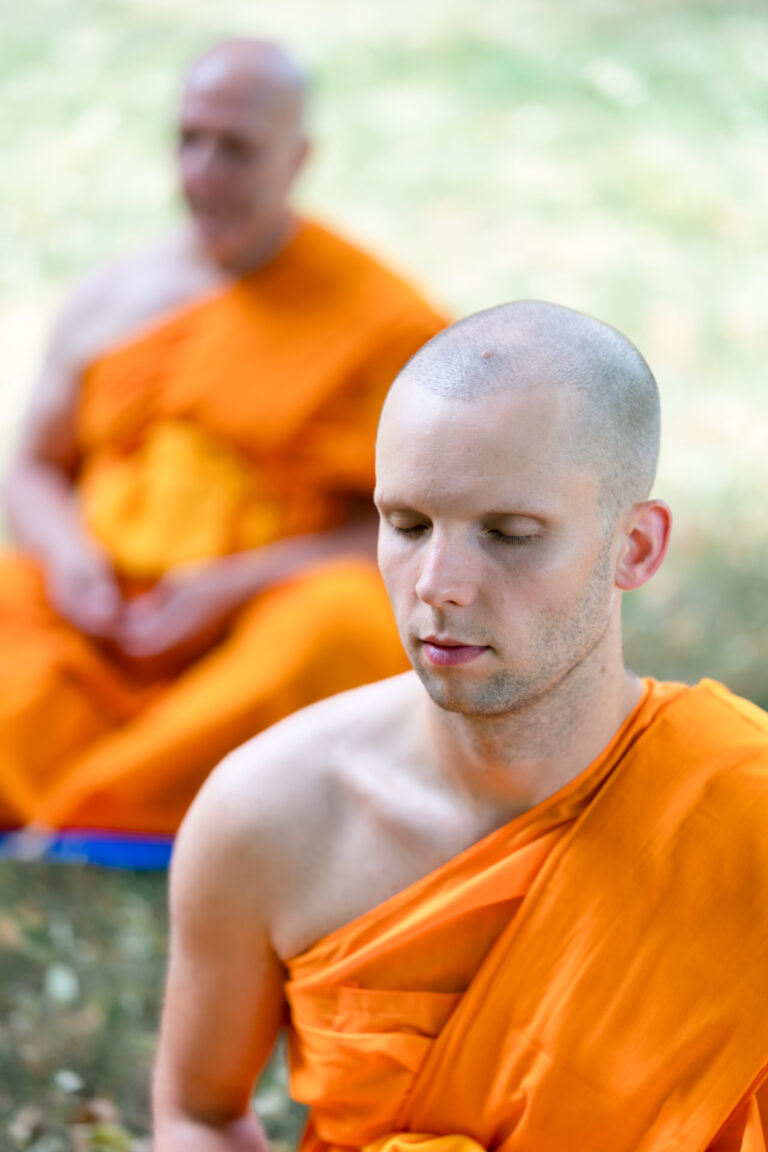
The swimmer that became a monk
There is a story of a professional swimmer who became a monk to learn meditation, but he had a difficult time. During his meditation sessions he was trying too hard, so his teacher told him to relax. But this simple instruction was too hard to follow for the swimmer. When he tried to relax, his mind drifted and his body slumped. When he tried to focus again, his mind and body became too tight.
His teacher asked him: “You do know how to swim, don’t you?”. “Of course, better than anyone” he replied. His teacher asked: “Does the ability to swim come from holding your muscles completely tense, or completely loose?”. The swimmer replied: “neither, you have to find a balance between tension and relaxation.” “Good,” his teacher continued. “So now let me ask you, when you’re swimming, if your muscles are too tense, are you creating the tightness in your limbs, or is someone else forcing you to tense up?” The swimmer replied: “No one outside of me is forcing me to tighten my muscles.”
The teacher waited a moment for the old swimmer to absorb his own answer. Then he explained, “If you find your mind becoming too tight in meditation, you yourself are creating the tension. But if you let go of all tension, your mind becomes too loose and you become drowsy. As a swimmer, you learned how to find the proper muscular balance between tension and looseness. In meditation you need to find the same equilibrium in your mind. Once you discover the perfect balance within your own nature, you’ll be able to swim through every aspect of your life the way you swim through the water.”
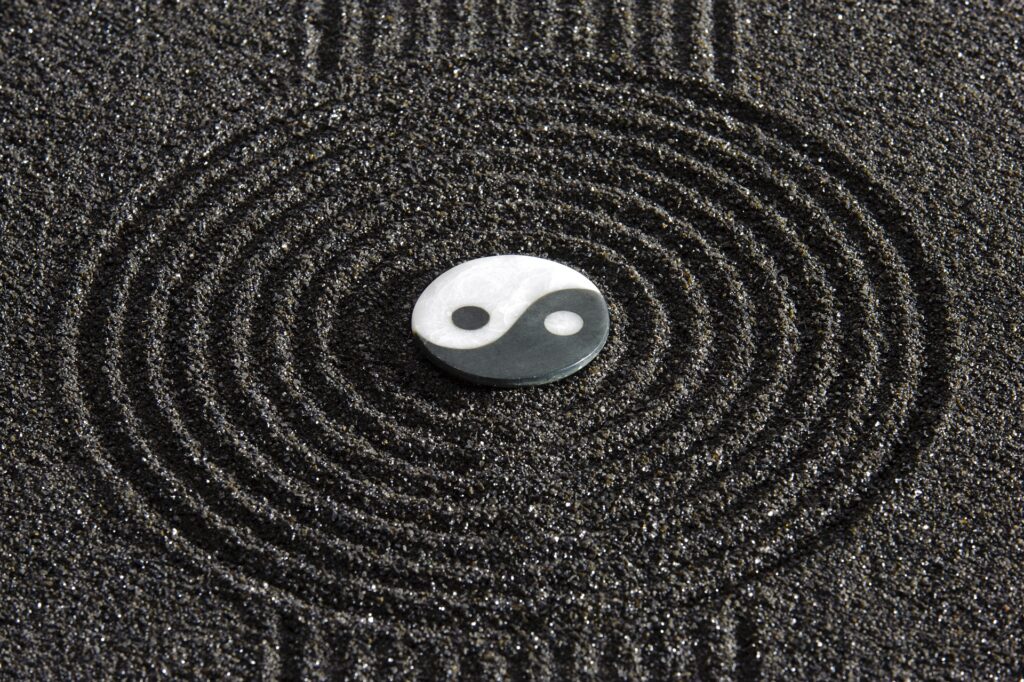
4. Conclusion
This is not an all-encompassing guide to meditation, but I tried to give you some essential pointers for starting out. To advance your practice you will have to practice yourself and check in with teachers. There are many, many different meditation techniques and traditions. They all have slightly different perspectives on meditation and how to do it. But in the end, they all point to the same ‘thing’ as far as I can see: seeing reality clearly, beyond the confines of the conditioned mind. Complete freedom of mind.
Explore different techniques, refine your practice, and adapt it to your needs. Whatever technique you use, it should get you to stillness within, that is how you know it works. But don’t focus on the fruit, focus on the practice itself, the fruit will come of it’s own accord. So, find a quiet space, sit comfortably, concentrate without straining, and let go of everything. Simple, but not easy.
I hope you enjoyed the article and I really hope that it will help you kickstart/advance your meditation practice, and that it has given some valuable insights. The best time to plant a tree was 10 years ago, the second best time is now. Go for it, and make it your own. Have a beautiful day!
Explore
Theory
Books I highly recommend:
-The Power of Now
-Buddhism: Plain and Simple
-The Joy of Living
-The Art of Happiness
-Why Buddhism is True
Practice
I’m working on a beginners meditation course, you’ll find it on this website when it’s done.

